New gold rush in El Salvador or mining ban to be restored?

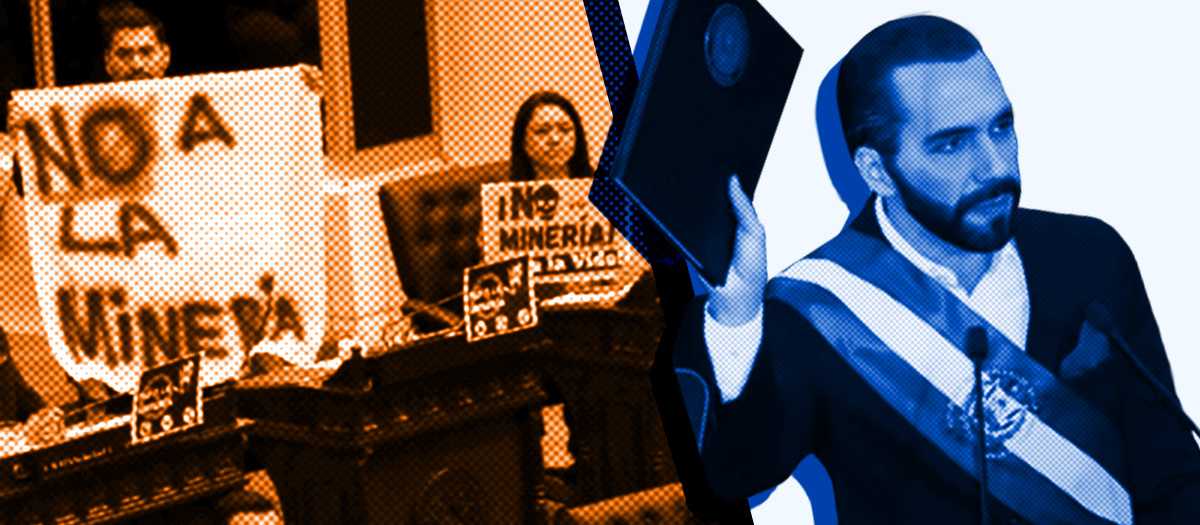
In the recent years a lot has been written on El Salvador regards to its president, uncompromised fight against organized crime and Bitcoin related policies. On 6th of December 2024, its president – Nayib Bukele – made a speech on immense yet unmined gold and other metal reserves. What is it all about then, and are they really worthy 3 trl USD, as he said?
The speech and the ‘tweets’
On 6th of December 2024, El Salvador’s president - Nayib Bukele – made an interesting speech. We’re used to Mr. Bukele making remarks on Bitcoin and making it legal tender. Or national security and waging successful and unprecedented war against organized crime and gangs. However this time he referred to something new – gold. He said that Central American nation of El Salvador is sitting on unmined gold worth as much as 3 trillion USD, which is roughly over 8.800% of its current GDP. But not gold exclusively as…
We’ve also found gallium, tantalum, tin and many other materials needed for the 4th and 5th industrial revolution
Prior to his recent speech, Mr. Bukele made a series of posts on X (ex Twitter) highlighting El Salvador’s gold potential, including an uncited study which showed the country has “potentially” the largest gold deposits per square kilometer in the world. He emphasized fact that country is located on Pacific Ring of Fire – an area of constant volcanic activity on the borders of tectonic rifts, which usually supports discovery of valuable minerals. Later he mentioned on studies conducted on 4% of country’s territory, which helped to identify 50 mln ounces of gold, which at current value would be worthy of 131.5 mln USD. This is equivalent of 380% of country’s GDP. Presence of Central American Gold Belt starting in Guatemala, going north to south, through El Salvador, Honduras, Nicaragua and reaching Costa Rica, may result in El Salvador’s underground gold reserves to be even over 3 bln USD, which would be 8.800% of country’s GDP.
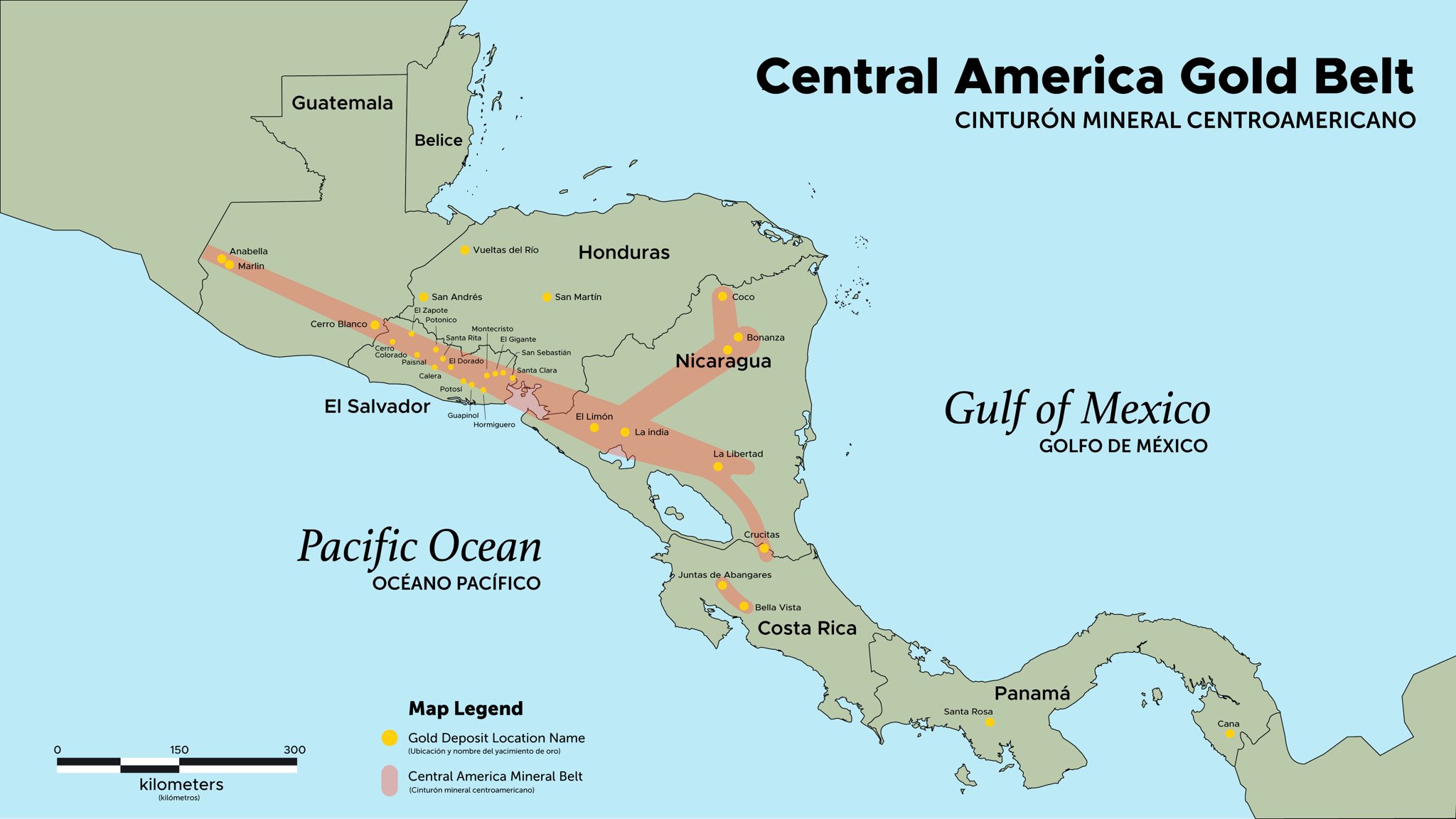
Central American Gold Belt. Source: https://x.com/nayibbukele/status/1861885298201768024/photo/1
In uplifting conclusion, Mr. Bukele wrote on how extraction of those mineral resources could lead to creation of thousands of high quality workplaces, country-wide financial infrastructure, promotion of local economies, and all of that on making modern, sustainable mining, considerable to natural environment.
We are the ONLY country in the world with a total ban on metal mining, something no other country enforces. Absurd! This God-given wealth can be harnessed responsibly to bring unprecedented economic and social development to our people.
He expanded his ideas on the mentioned speech, couple days later in which he said, this lost value could be used to help clean up El Salvador’s rivers. According to government data, about 95% of the rivers in El Salvador are contaminated, and Mr. Bukele argues that the focus should be on cleaning up those rivers, instead of preventing further pollution by banning mineral extraction.
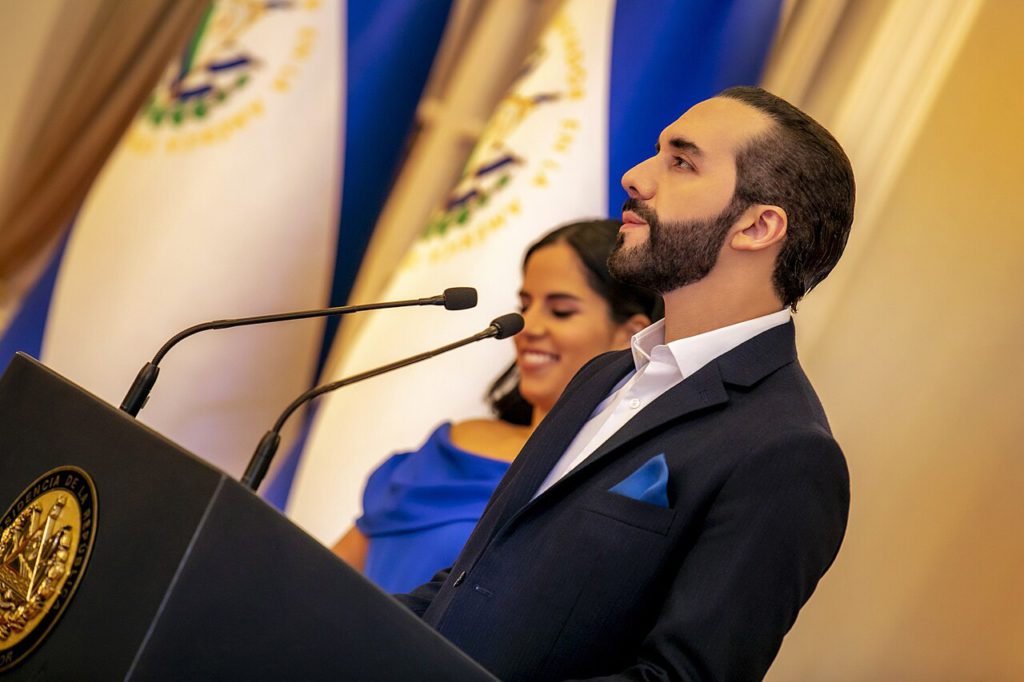
Nayib Armando Bukele Ortez, the 81st president of El Salvador. Source: https://www.flickr.com/photos/fotospresidencia_sv/53220813670
The mining ban lifting
El Salvador had banned mining activities in the past. Mr. Bukele’s predecessor, former left-wing rebel - Salvador Sanchez Ceren - imposed the mining ban in 2017 following pressure from rural communities who had expressed concerns about harmful chemicals like cyanide and mercury used in mining practices. Now, Mr. Bukele, first President not elected as a candidate of one of El Salvador’s two major political parties (ARENA and FMLN) since 1989, pledged to revoke this ban.
On 23rd December 2024 El Salvador’s Congress easily approved law that would lift the country’s seven-year-old ban on mining for metals. Local legislature is unicameral body which is composed of 60 deputies (reduced from 84 as on 7th June 2023) and as per 2024 elections, 57 of elected deputies are members of Nuevas Ideas – political party established in 2017 by Nayib Bukele himself, then mayor of country’s capital - San Salvador.
The legislation will grant Salvadoran government sole authority over mining activities within the country's land and maritime territory. However it does prohibit use of mercury in mining and seeks to declare some areas incompatible with metals mining as protected nature reserves. Some resemblance to what Mexico did in its legislation in 2023 and what we covered in our past analysis ‘Mexico’s new mining law may affect silver supply’ are clear.
The lawmaker Elisa Rosales, from Bukele’s New Ideas party, said in a speech to the legislature:
By creating a law that puts the state at the center, we are guaranteeing that the population’s wellbeing will be at the center of decision making.
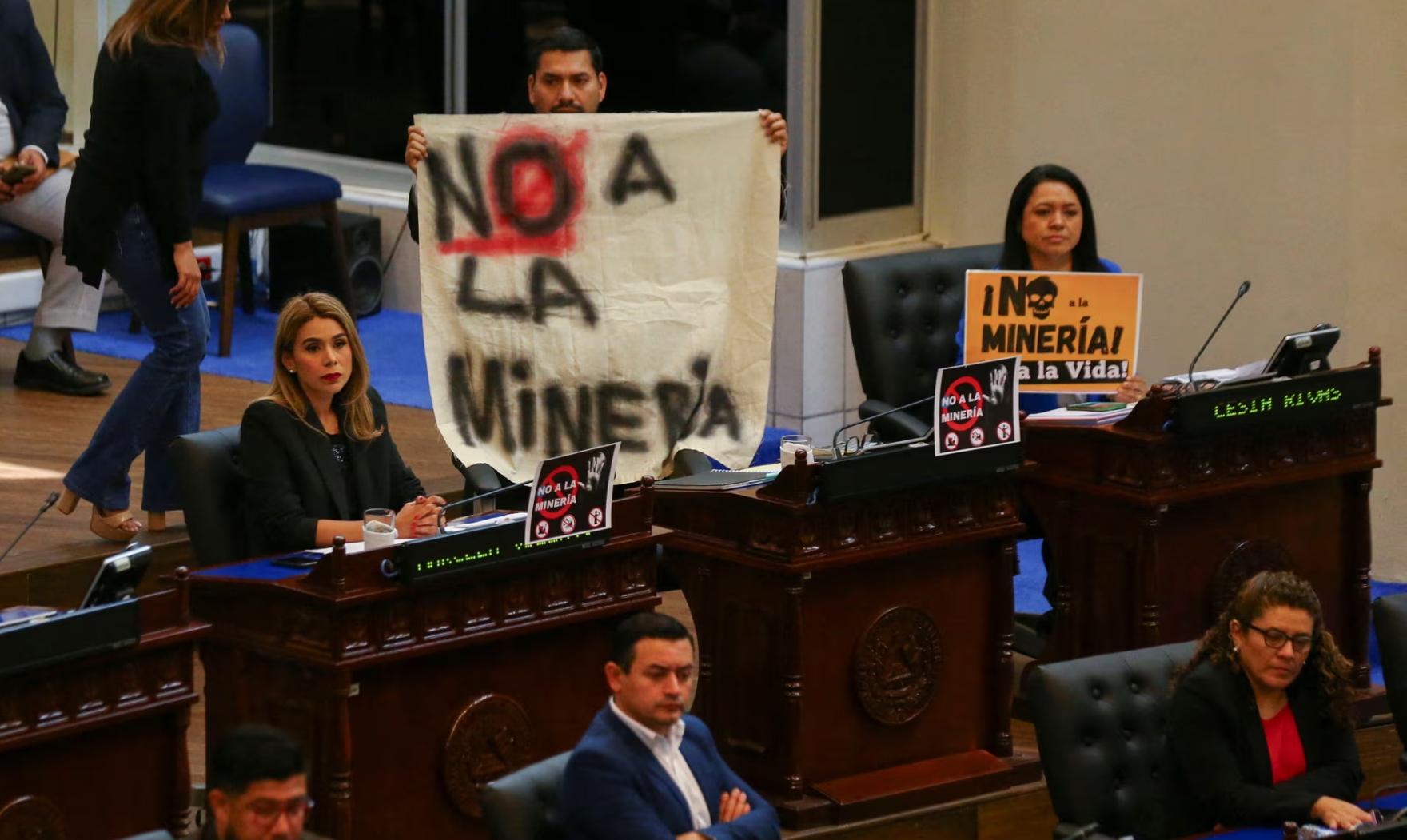
Opposition representatives protest while congress debated a bill that overturned a ban on metals mining. Source: https://www.theguardian.com/world/2024/dec/23/el-salvador-overturns-metals-mining-ban
However many are not convinced government to be able to keep up its promise. Dozens of people protested near Congress against the reauthorization of mining, arguing that future projects could affect the communities and ecosystem of the smallest country in Central America. Apart of unorganized or politically associated, organized environmentalists also have promised strong opposition, citing potential irreversible damage to ecosystems and public health. Even Roman Catholic Church in person of Archbishop José Luis Escobar Alas of Archdiocese San Salvador joined those opposing and appealed in its homily to president to not to lift mining ban. Other church notables also encourage to resistance. Similar concerns appeared in coverage by international media, which are to be associated as ‘left-wing’ sympathizers on political compass. Among many, British The Guardian.
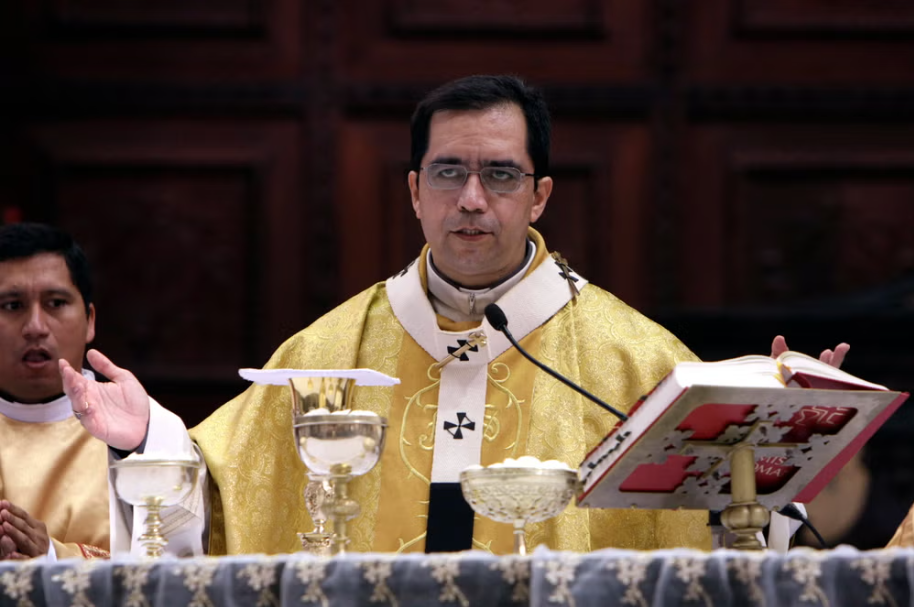
Archbishop José Luis Escobar Alas. Roman Catholic Church in El Salvador always had influential and strong position, and was always against metal and gold mining, affecting waters and natural resources of Salvadorians. Source: https://www.independent.co.uk/news/nayib-bukele-ap-el-salvador-catholic-church-congress-b2657057.html
Environmentalist Luis González told reporters:
We oppose metals mining because it has been technically and scientifically proven that mining is not viable in the country (…) The level of contamination that would be generated in the water, soil and biodiversity is unacceptable for life as we know it.
How much of the above are genuine concerns and how much is applicable to political fight against current president, is difficult to deem without expertise from someone specialized in El Salvador’s political scene, who wouldn’t lean politically in any direction.
El Salvador was a field of bloody civil war waged 1979-1992, with heavy toll of victims. Echoes of this conflict are still present in its modern history, as country never fully recovered from the war, as evidenced by the hundreds of thousands of people who have fled El Salvador to neighboring countries or just USA. Approx. 20% of El Salvador inhabitants live in poverty, according to the United Nations Economic Commission for Latin America and the Caribbean, and 70% of the workforce operates in the informal sector.
The country has been plagued with gang violence and experienced the highest murder rate in the world. It also stood and stands low in corruption perception index. Just to mention - two former presidents, including aforementioned Salvador Sanchez Ceren, had been found guilty of illegal enriching themselves.
Country has long history of violence against human rights and environmental activists. Currently, those fighting for rights of LGBT minorities and abortion, claim to be subject of defamation campaigns, violence, death threats and unlawful imprisonment. Speaking of, Bukele’s actions against organized crime were named unprecedented yet successful. However, what is often emphasized, this campaign made basically 1% of 6 mln nation imprisoned. Crackdown has reportedly produced hundreds of deaths among detainees, with international human rights organizations such as Amnesty International declaring to be the worst abuse of human rights in the country since civil war.
But visible effect is that homicide rate dropped nearly 70% over the year, while country turned into one of the safest in the world. And despite of ‘controversies’ surrounding policies of President Bukele, as well as controversies on immediate re-election process, Salvadorians predominantly decided to support him for a second turn in 2024 presidential elections, with over 84% of votes.
What led to 2017 mining ban
Gold mining occurred in El Salvador since end of XIXth and beginning of 20th century, initially on artisanal scale. It became significant economic activity during 70’s, upon industrialization of San Sebastian Gold Mine by US based Commerce Group. Mining activity however ceased soon, as a result of Salvadoran Civil War. Upon its end, government proposed designated mining zones and issued exploration licenses to many foreign mining companies. All in attempt to support wrecked and predominantly agrarian Salvadorian economy. This however led to much pushback and years of social unrest and opposition from the local communities based on the environmental impact.
Overall, Commerce Group began mining precious metals in El Salvador in 1968, and between 1987 and early 2006 expanded their mining and related activities which were regulated by exploration licenses and environmental permits granted by the El Salvador. Eventually government terminated a 30-year mining concession to the Americans, which followed withdrawal of environmental permits. This eventually led Commerce Group and its subsidiary San Sebastian Gold Mines to file the lawsuit against local government in 2009.
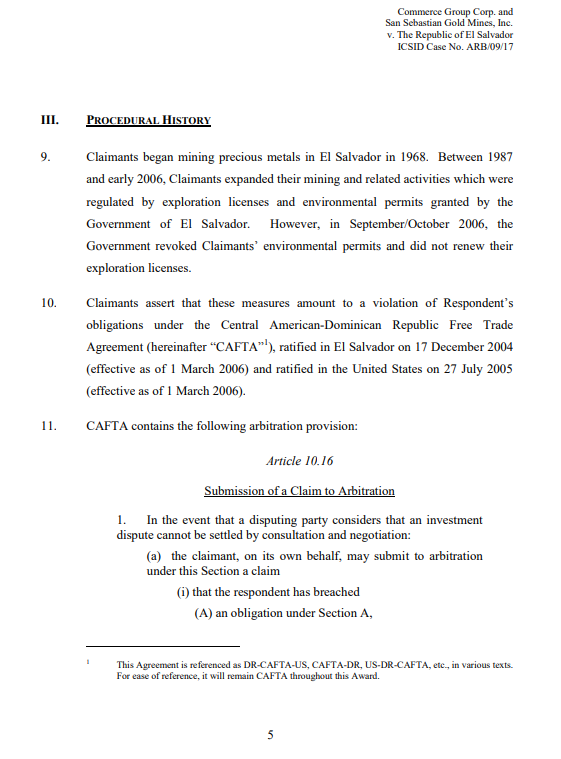
Fragment of award by International Centre for Settlement of Investment Disputes for Commerce Group vs Republic of Salvador. Source: https://www.italaw.com/sites/default/files/case-documents/ita0202.pdf
Other important Salvadorian gold mine was El Dorado. It has been acquired by Pacific Rim Mining Corporation in 2002 but failed to obtain exploitation rights which are issued by the Salvadorian Ministry of Economy. According to historical sources, it happened due to failure to complete the appropriate requirements in terms of adequately reporting their planned use of ground water. This yet again led to lawsuit against local government filed in 2009. Claims were arising out of the Government's refusal to issue necessary mining licenses for the project, due to alleged environmental concerns including the company’s use of certain chemicals in the extraction process.
Despite El Salvador’s history of violence against human rights and environmental activists, as well as lawsuits brought by the state against them, Luis Parada, a 64-year-old former army officer who spoke out against the military’s notorious murder of Jesuit priests in 1989, headed the legal defense for the Salvadoran government. This truly must be considered as a sign of determination beyond divisions. Eventually, International Centre for Settlement of Investment Disputes, a World Bank Tribunal, settled lawsuit by Commerce Group in the state’s favor in 2011 and dismissed Pacific Rim’s claim in 2016.
On that occasion Mr. Parada said:
Winning both arbitrations was key for the mining ban. We won the last one in October 2016, and shortly after, in March 2017, the country had passed the law thanks to the momentum that the communities created after more than a decade fighting the mining industry.
By that time, almost 80% of the population supported full mining ban. And indeed, it happened. On 29 March 2017, El Salvador’s Legislative Assembly discussed and voted for a ban on metallic mining that would become the first of its kind in the world. New law had been passed with 69 votes out of 84, a share well above the simple majority of 42 required to introduce or reform laws through legislative decree in El Salvador. Considering circumstances, ban was widely considered inevitable, to the point that no delegate dared say anything negative during that day’s legislative debate. Those who disagreed simply did not turn up for the vote.
And this is how El Salvador become the first country in the world to ban all forms of artisanal and industrial metal mining. Crucially, although codified by Salvadoran legislators, the ban was citizen crafted. It resulted from a political-legal process spanning more than a decade in which citizen participants in various self-created organizations and civil society organizations, as well as local populations in would-be mine areas, sought to assert their views about how the country’s mineral deposits and water resources should be governed. Final version of legislation had been produced with strong participation of local structures of influential Roman Catholic Church, and with the participation of non-government and civil society organizations. It has been modelled on previous drafts made by mentioned above.
Water wars
There are multiple reasons emphasized by those opposing lift of mining ban in El Salvador. A 2015 poll commissioned by the Jesuit-run Central American University found that four in five Salvadorans living in areas in proximity of mining projects opposed gold mining in their communities, in addition to other local referenda. On top of that, recent poll by the Public Opinion Institute at Central American University (IUDOP) revealed 59% of the Salvadoran population believes the country is not suited to the mining industry. Simply, because El Salvador’s rural economy depends heavily on subsistence agriculture and local tourism. Both will be harmed by the contamination of rivers, air and soil that come with mining.
But apart of social, economic, environmental and political reasons, there is on predominantly important. That is water.
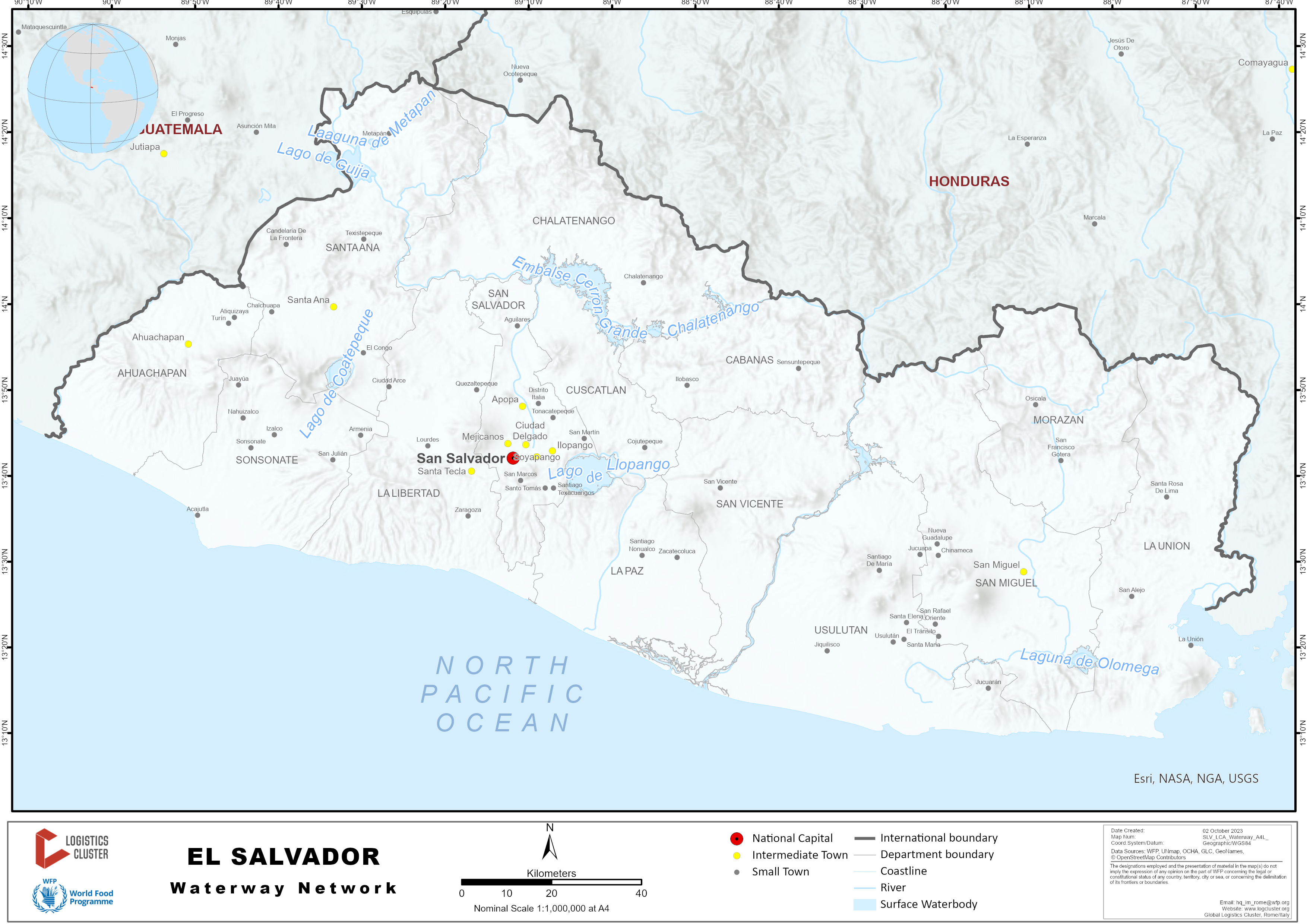
El Salvador has the lowest per capita water resources in Central America, and among the lowest in the entire hemisphere. Source: https://lca.logcluster.org/el-salvador-25-waterways-assessment
El Salvador has one major watershed - Rio Lempa River - which supplies water to over half of the households in the country. The Rio Lempa watershed is one of the longest rivers in Central America and the only navigable river in El Salvador. Its basin covers 49% of the country's territory and is in close proximity to 80% of the country's population, including the capital city of San Salvador. Thus Rio Lempa, plays critical role in the well-being of Salvadorans by providing drinking water, in addition to supporting industry and hydropower generation, irrigation, and diverse ecosystems.
Rio Lempa winds through the countryside where gold deposits are located. According to 2005 Moran Report, there is a risk, that potential earthquake or hurricane could compromise tailing ponds from mining activities and contaminate watershed. And these most likely include cyanide which is used in 90% of industrial gold mining operations. Apart of that, concerns are related to acid mine drainage, which is extremely common because there are sulfides in the rocks, along with the gold, that when exposed to the air and rain convert into sulfuric acid. With each rainfall, they release other substances found in the rocks, including harmful metals and metalloids like arsenic. Related to the subject is also matter of tailings. Assuming even couple of grams of gold per ton, means massive volumes of waste tailings would be directed to watersheds, polluting it, and therefore devastating environment, local communities and economies.
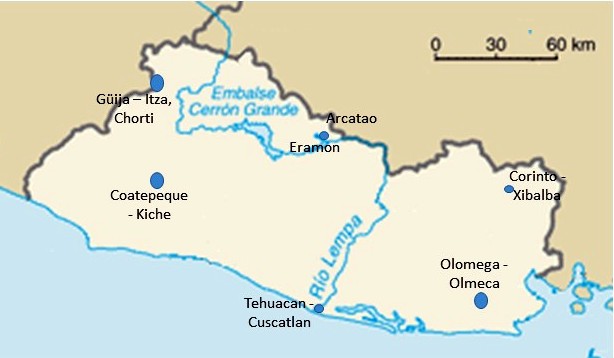
Rio Lempa starts in Guatemala, goes through Honduras and reaches Pacific in El Salvador. Source: https://www.un-igrac.org/case-study/trifinio-aquifer
El Salvador’s gold is incredibly fine (rather won’t find gold nuggets), which takes vast quantities of water to. Estimates show that gold mines use between 6.937 and 18.000 liters of water per ounce of gold to be produced. But El Salvador has the lowest per capita water resources in Central America, and among the lowest in the entire hemisphere. Hence gold mining threatens both the quantity and quality of the water supply in predominantly agricultural country
However, in attempt to preserve Salvadorian waters, authorities and international institutions implemented an interesting plan. On 16th October 2024, The US International Development Finance Corporation, Government of El Salvador, Development Bank of Latin America and the Caribbean, Catholic Relief Services, Environmental Investment Fund of El Salvador, and ArtCap Strategies announced the financial close of a 1 bln USD debt-for-nature (DFN) swap. And please be aware, that this is something completely different matter than IMF’s 1.4 bln USD loan to which one of the conditions was to curb ambitious Bitcoin-related activities by El Salvador. Lot has been written about this one, while DFN has been covered just by specialists.
In short - transaction comprises El Salvador's issuance of 1 bln USD 20-year Impact Notes and the concurrent tender offer of a portion of its outstanding notes using the proceeds of the new Impact Notes. The new Impact Notes, in turn, were purchased by a special purpose vehicle using the proceeds from a loan extended by J.P. Morgan, as an original lender. The conversion allowed El Salvador to successfully refinance more than 1 bln USD of its outstanding notes and generate an expected 352 mln USD in lifetime savings through immediate notional debt savings and a material reduction in debt service costs. Critically, as noted below, nearly all these savings will be applied to a program called the Rio Lempa Conservation and Restoration Program representing the largest funding commitment a country has ever made for conservation in a DFN transaction.
This debt conversion represents the most ambitious and impactful environmental action in El Salvador's history. It not only reaffirms this government's commitment to economic growth, it also enables us to achieve this growth while preserving one of our most precious natural resources: the Lempa River watershed. With support from international parties, we are executing the largest debt conversion transaction of its kind to date. This debt conversion project promotes sustainable development for our communities, strengthens our water security, and protects our ecosystems to secure the well-being of this generation and those to come. With this debt conversion, we aim to transform the environmental and economic future of El Salvador.
– Announced El Presidente.
Overall, El Salvador's DFN represented a bespoke structure, which combined capital markets (the Impact Notes), banking (the loan and letters of credit), derivatives (floating to fixed rate hedge), project finance (conservation), and international arbitration (enforcement) products that were carefully designed and aligned to serve the commercial and environmental objectives of the transaction. It is mechanism used few times already, i.e. in Belize, but for the first time on such scale.
Which proves, that despite of financial troubles, Bukele’s administration attempts to deliver environmental promises.
And finally on gold
Finally, question that needs to be asked – how much gold El Salvador has for real? Is it really 3 trillion USD which has been quoted by media all over and around? Probably not, but Mr. Bukele made his point – El Salvador is on the main pages and circled with interested miners.
However, El Salvador most likely as potential. Historical sources do not mention on local gold mining in the time of being Spanish colony, as other regions of Central America dominated in production. To seek for Salvadorian gold veins we have to reach end of XIX century. The gold-silver district of Jocoro-Divisadero (San Cristóbal) in eastern El Salvador was exploited mainly between 1870 and 1950, but there are no reliable data on production during that period.
The San Sebastián mine in the mining district of Santa Rosa de Lima was considered one of the richest gold producers in Central America, since its production between 1890 and 1920 reached about one million ounces of gold with grades as high as 2 ounces per ton (62 g!!!). It was probably worked since 1880, but again, there are no records of production.
Other pinpoint comes from 1999 analysis of mineral industry of El Salvador by United States Geological Survey. USGS writes as follows:
The historic El Dorado gold mine near San Isidro, which is about 50 kilometers (km) east-northeast of San Salvador, was under redevelopment by Canada’s Mirage Resource Corp. After estimating a resource of 5.2 million metric tons at a grade of 6.29 grams per ton (g/t) gold and 46 g/t silver in three distinct vein systems in 1995, Mirage announced that drilling results involving intercepts of 4.8 meters (m) at a grade of 30.39 g/t gold and 243 g/t silver, 6.62 m at a grade of 26.82 g/t gold and 209 g/t silver, and 7.63 m at a grade of 10.96 g/t gold and 52.44 g/t silver, all represented true widths in three different holes (Northern Miner, 1996). Prefeasibility studies and an environmental impact assessment have been initiated, but the entire project has been slowed by low gold prices.
But on more modern and wholesome data, deposits in El Salvador consist of veins whose reserves - both measured and indicated - add up to over 1.1 million ounces of gold and 7.4 million ounces of silver. A further 185.000 ounces of gold and 1.2 million ounces of silver are in the inferred category. That is according to 2010 data by Pacific Rim.
So, are we going to experience new gold rush in El Salvador, or rather mining ban to be restored?